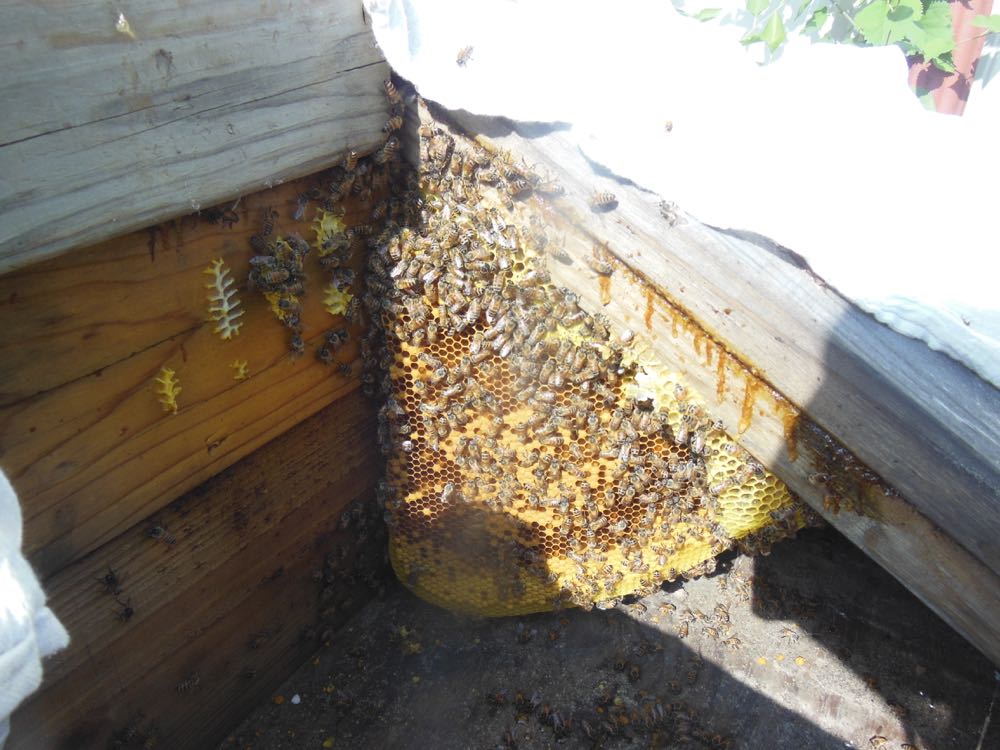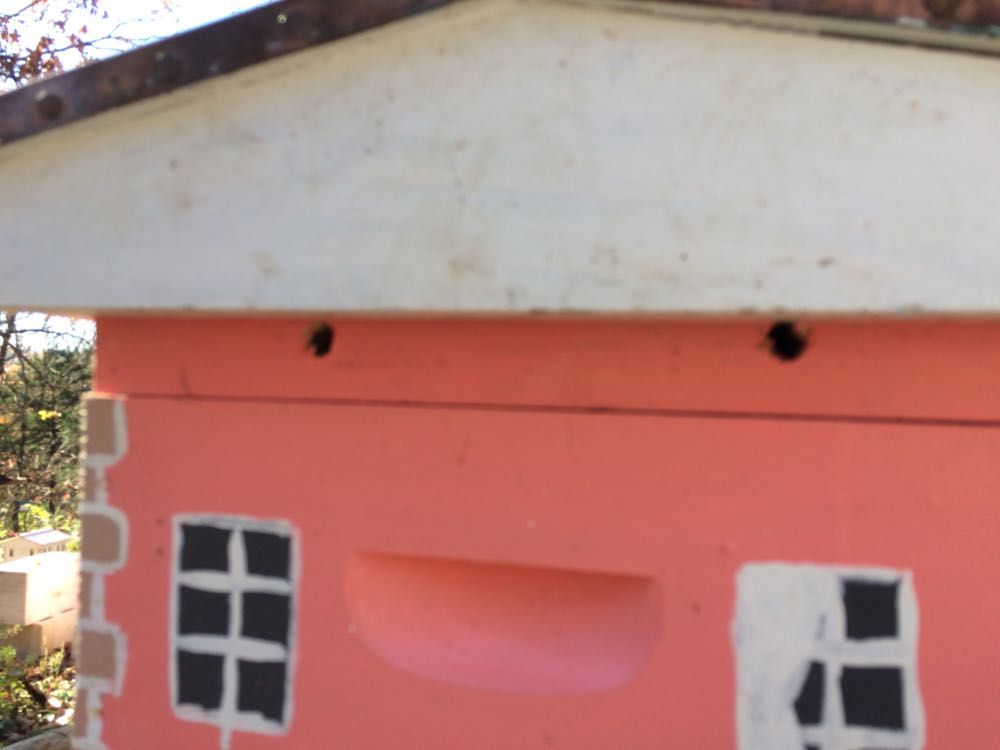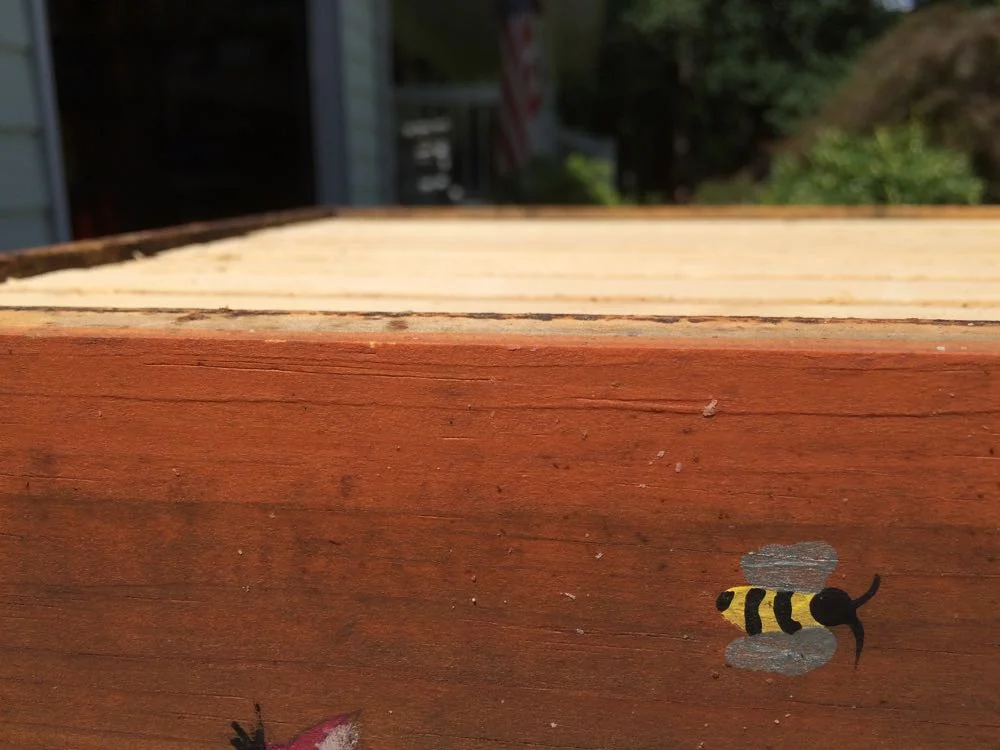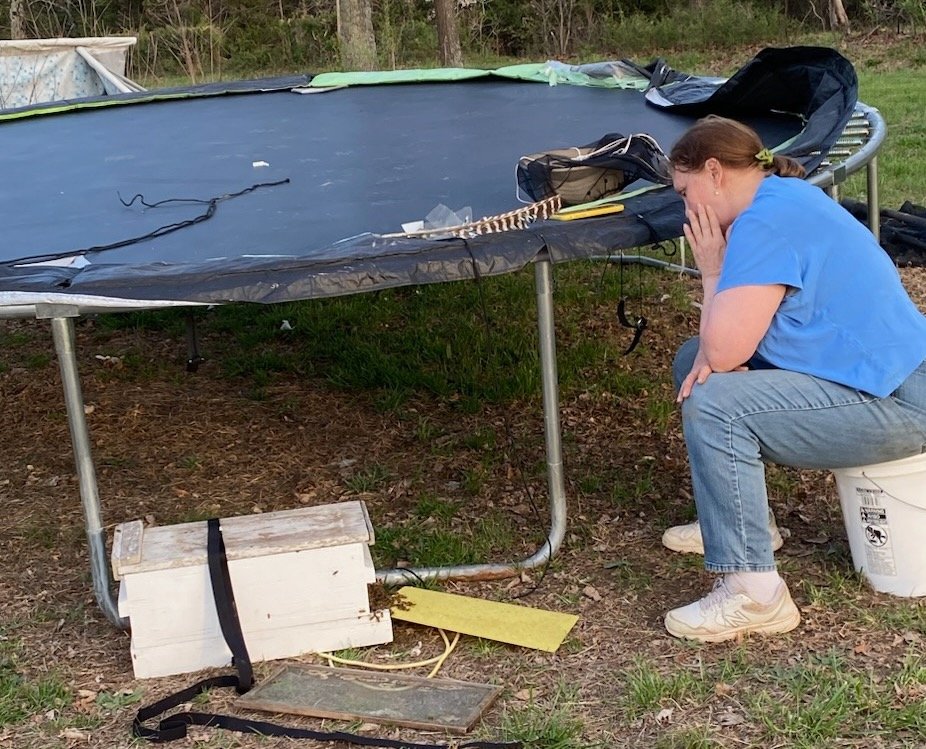Queen Introduction Window
/The introduction window, also called the “get acquainted window,” on the bottom of a JZ BZ queen cage. (Photo by Charlotte Ekker Wiggins)
Queen Introduction Window
JZs BZs, sometimes just called by the letters J Z - B Z, queen cages were designed to help introduce queens into new colonies. The JZ BZ cage was invented by Jim Paysen, owner of the JZs BZs Honey Company.
The queen cage has several features I never heard about before so I decided to research all of the cages features. This is about the about the “introduction window” on the bottom, also called the “get acquainted” window.
One of the challenges beekeepers have is successfully introducing new queens to an existing colony. This queen cage has several helpful features including the bottom opening where one can create the “introduction window.”
Here’s how to use the “window” as you introduce a new queen:
For slow introductions, leave the plastic cap over the candy tube until you are ready to allow the bees to start eating out the candy. I know, most of these don’t have those caps.
If there is no plastic cap for the candy tube, cover the candy tube opening with a small piece of duct tape. Double this to two layers of duct tape to be sure worker bees don’t eat through the candy quickly.
When you are ready to start the introduction, remove the plastic cap or the duct tape from the candy tube opening and let the bees eat out the candy.
At this time, open the Introduction Window by removing the breakout bar before inserting the new queen in the hive --- providing you want to use it and you are ready to allow workers to enter.
When the break out bar is removed from the bottom of the JZ BZ queen cage the window still acts as a queen excluder, keeping the queen inside, but letting the worker bees, a few at a time, come and go from the cage. That helps to transfer the queen pheromone throughout the hive before the queen is released.
Check back in about 3 days to make sure the queen is released. If not released, you can probably release her safely providing the bees aren’t attacking the cage and trying to ball her. A lot depends on the conditions and the nectar flow.
Keep a few cages in your bee suit pocket whenever you go to check bees, You will be ready when you suddenly find emerging virgin queens in your hive or you need to move a queen safely.
I keep a supply handy to also collect queen cells and carefully moving them to an incubator.




































